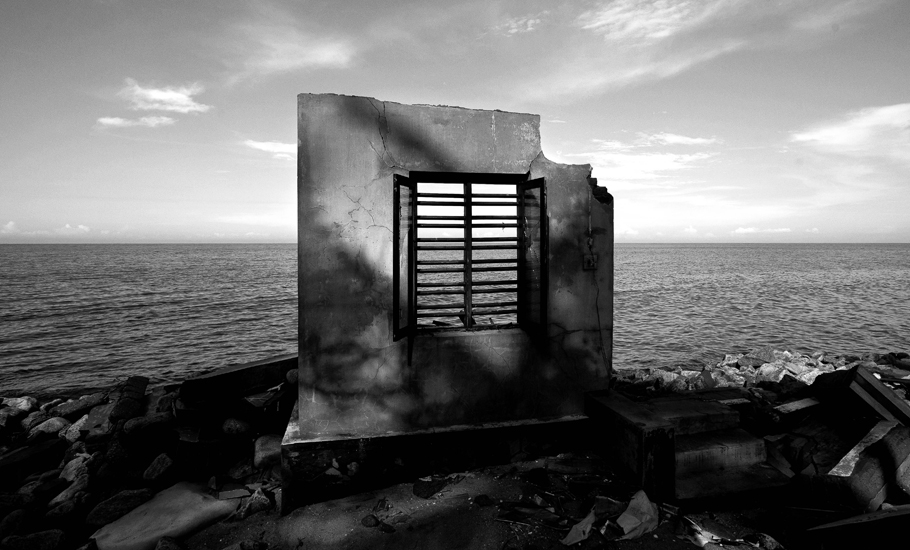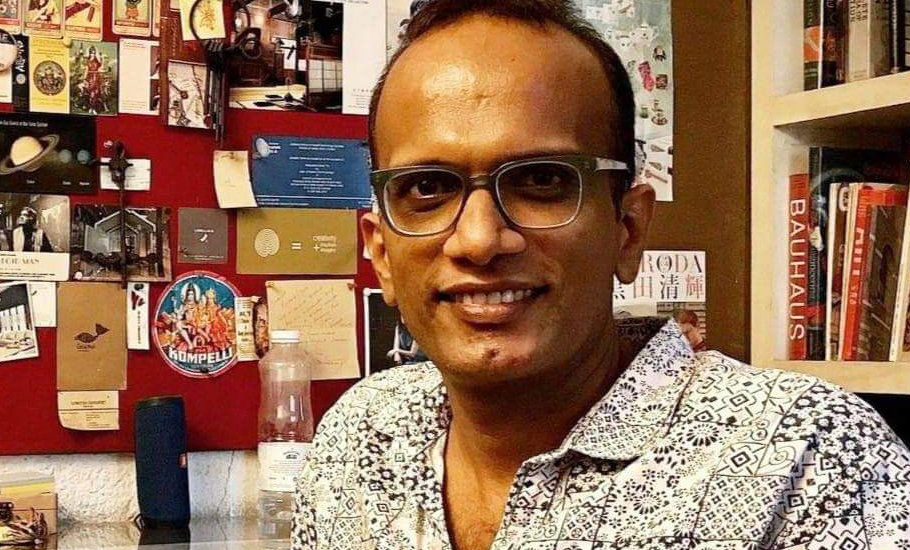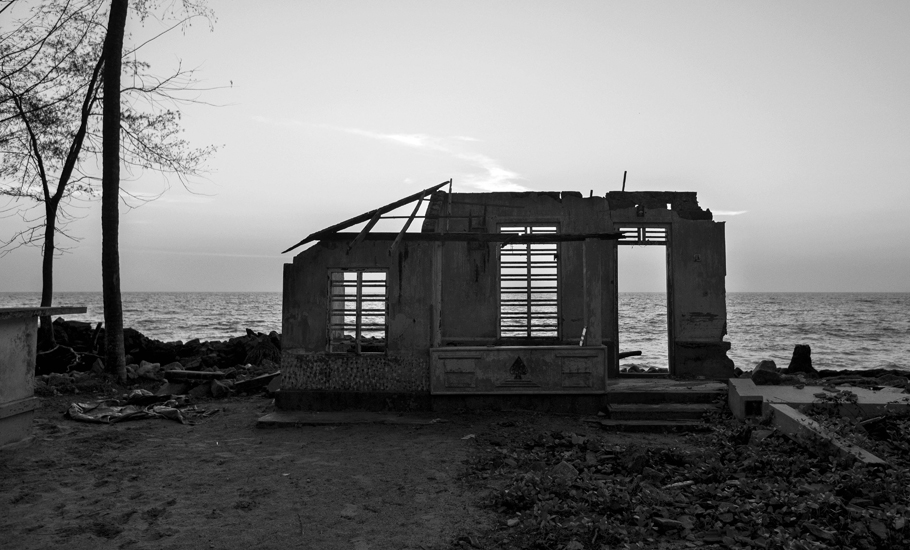
- Home
- News
- Analysis
- States
- Perspective
- Videos
- Education
- Entertainment
- Elections
- World Cup 2023
- Features
- Health
- Business
- Series
- Economy Series
- Earth Day
- Kashmir’s Frozen Turbulence
- India@75
- The legend of Ramjanmabhoomi
- Liberalisation@30
- How to tame a dragon
- Celebrating biodiversity
- Farm Matters
- 50 days of solitude
- Bringing Migrants Home
- Budget 2020
- Jharkhand Votes
- The Federal Investigates
- The Federal Impact
- Vanishing Sand
- Gandhi @ 150
- Andhra Today
- Field report
- Operation Gulmarg
- Pandemic @1 Mn in India
- The Federal Year-End
- The Zero Year
- Premium
- Science
- Brand studio
- Home
- NewsNews
- Analysis
- StatesStates
- PerspectivePerspective
- VideosVideos
- Entertainment
- ElectionsElections
- Sports
- Loading...
Sports - Features
- BusinessBusiness
- Premium
- Loading...
Premium

In Kerala, the sea is washing away hopes, homes and all memories

It was while documenting the old Ponnani port (in Malappuram district of Kerala) that artist-photographer KR Sunil met Hakina and her mother at their hut standing perilously close to the sea. As they talked, waves hit the ruined hut one after the other in quick succession. The photograph of Hakina pencilling her eyebrows standing near an old bicycle in front of her hut was displayed at...
It was while documenting the old Ponnani port (in Malappuram district of Kerala) that artist-photographer KR Sunil met Hakina and her mother at their hut standing perilously close to the sea. As they talked, waves hit the ruined hut one after the other in quick succession.
The photograph of Hakina pencilling her eyebrows standing near an old bicycle in front of her hut was displayed at an exhibition held in Kochi in 2016. Seeing the pathetic condition of the hut, a viewer got it renovated, and Hakina was happy. But the happiness, much like a sand castle, didn’t last. A year later, when Sunil revisited the spot, he couldn’t see Hakina there. The sea had taken over the house, sending Hakina and her mother to a nearby colony, where such homeless fisherfolk live.
The incident disturbed Sunil, and he decided to document such houses on the verge of collapse, along the Kerala coastline from Kasargod to Thiruvananthapuram. When Sunil visited the huts of fishermen situated close to the sea, he came to know that many of their homes are partially destroyed—if not completely washed out, in the sea erosion and have become uninhabitable. This phenomenon had a spillover effect, making many people homeless throughout the coastline of Kerala. The cause of it lies primarily on the drastic change of climate but also secondary factors like unscientific developmental projects and encroachment of seashore for construction activities.

Kerala has a coastline of 580.5 kilometres. As the fisherfolk live close to the sea, they fall victim to the incessant rains and climatic changes. Sunil’s photographs, some exhibited at the ongoing Lokame Tharavadu (The World is One Family) show in Alappuzha, show the unending worries of people who live along the coastline.
“What they lose in coastal erosion is not just their habitats or means of life, but memories that they preserved for ages, knowledge that they inherited, and of course, the land that they have been deeply rooted in for centuries,” says Sunil.
“The irony is that those who live in complete harmony with nature suffer for the exploitation that others commit to nurture their petty interests in far-flung regions,” he adds.
The melting of ice in the Polar regions due to global warming, according to Sunil, raises the level of seawater which leads to large-scale coastal erosion. “Reports suggest the sea engulfs the seashore for several meters every ten years and a likelihood of eventual submergence of major coastal cities in India including Kochi. Building a house involves quite a lot of effort, especially for the people living in the coastal areas. What they learned from the past generations about the sea and climate is the only fortune they possess. But the changes that global warming and irrational development policies brought in have shattered the rhythm of seasons and bemused them,” he says.

Although trained in sculpture from the Fine Arts College of Thrissur, Sunil later chose photography to express his ideas. Inspired by veteran photographers Sebastiao Salgado, Raghu Rai and Steve McCurry, he was passionate about the lives of people. With his camera, he visited old ports, markets, tea stalls and seashores. The sea attains a significant role in his work as he focuses his camera on the sleepy old port towns, warehouses, harbours and boatyards.
In 2016, his photographs titled ‘Vanishing Life-Worlds’ portraying the journey into the decrepit port town of Ponnani had been exhibited at the Kochi-Muziris Biennale.
Sunil’s journey along the coastline of Kerala from Kasargod to Thiruvananthapuram in search of the houses of fisherfolk was challenging. The memory cards of his camera were filled with huts of fishermen on the verge of collapse. “It was disappointing to see the huts that you once visited vanish on your next trip. The situation necessitates a massive exodus of people in search of safer places. What these people lose in coastal erosion is not just their habitats or means of life, but memories preserved for ages, knowledge inherited from previous generations, collective life they led, and of course, the land they deeply rooted in for centuries,” says Sunil, a native of Kodungallur, who grew up listening to the legends and tales of the ancient port city of Muziris.

For Sunil, ancient ports are a place where cultural exchange takes place. The people who live on the ports have a lot of stories to tell. “I have watched the old ports and the people there. The people here are very warm and hospitable. They are very open-minded,” he says.
Titled ‘The Seafarers of Malabar’, Sunil documented more than 50 seafarers in 2018. A collection of 34 black and white close ups of seafarers, which he exhibited at URU art harbour in Kochi in 2018, evoked tremendous response. Called Mancukkar (khalasis), these seafarers are migrant labourers who were pioneers in cross-regional labour vital to the functioning of trade, transportation and pilgrimage throughout the Arabian sea and beyond between 1950s and 70s.

As part of the project, Sunil visited many huts of the fisherfolk. “I found ‘Happy Birthday’ stickers pasted on the walls of many ruined huts. Some have posters and pictures of gods. We don’t know where they are now. Even though they have gone, the memories that they left are still here. It is a cultural tragedy,” he says.
Even though Sunil was keen on documenting the old ports and seafarers, this is the first time his photographs appear without human figures. “This series has only the remains of huts of fisherfolk along the coast. You can’t find any of them today, as all of them have been taken over by sea. I want to create awareness among people about the issues of climate change and unplanned development through my pictures,” he says.

